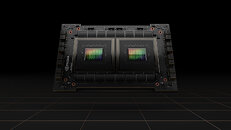
EK Introduces the EK-Pro NVIDIA A100 80 GB Rack GPU Water Block
EK, the leading computer cooling solutions provider, is now offering an enterprise-grade GPU water block for PNY NVIDIA A100 80 GB PCIe data center GPUs. The EK-Pro GPU WB A100 80 GB Rack - Nickel + Inox is a high-performance water block specifically engineered to make the entire GPU and water block assembly as thin as possible, effectively allowing it to consume only a single PCIe slot width-wise. The water block is equipped with a rack-style terminal, considerably reducing the assembly height and increasing the chassis compatibility.
By spanning the entire PCB, the water block directly cools the GPU, HBM VRAM, and the VRM (voltage regulation module) as the cooling liquid is channeled directly over these critical areas.
By spanning the entire PCB, the water block directly cools the GPU, HBM VRAM, and the VRM (voltage regulation module) as the cooling liquid is channeled directly over these critical areas.


























































